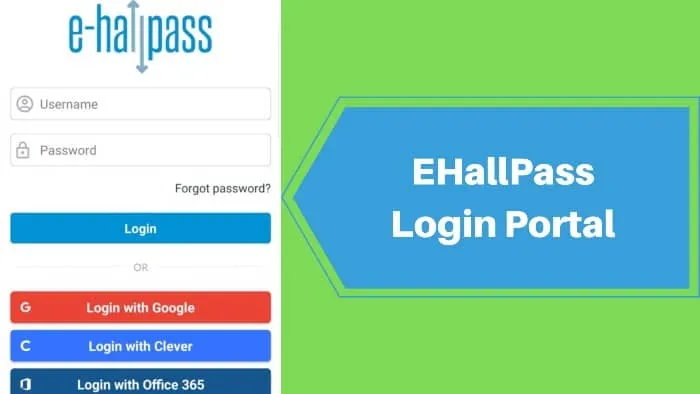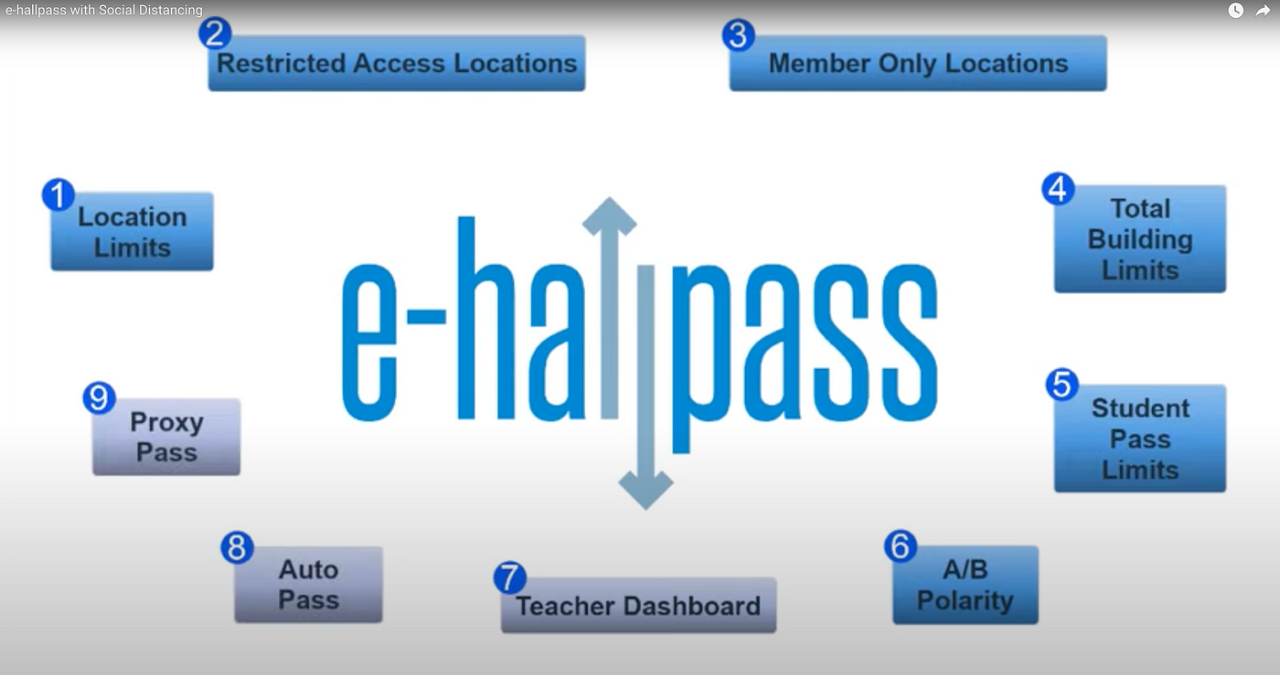Explore the benefits, features, and real-world impact of e hall pass systems in schools. Learn how this digital tool enhances safety, accountability, and efficiency in student movement.
In today’s rapidly evolving educational landscape, the e hall pass is emerging as a game-changer in how schools manage student movement. Gone are the days of paper slips and vague verbal permissions. With the digital transformation touching every corner of the education system, hall pass management has seen a remarkable upgrade through e hall pass platforms. These systems offer a digital, trackable, and highly customizable solution that benefits teachers, students, and administrators alike.
Whether you’re a school principal looking for more control over hallway traffic, a teacher who wants a quicker and more efficient pass process, or even a parent interested in how schools are keeping students safe and accountable, understanding the e hall pass system is crucial. This article explores every facet of the e hall pass, from its functionality to its benefits, challenges, and future potential—all while keeping things expert-level yet easy to digest.
Understanding the Concept of e Hall Pass
So what exactly is an e hall pass? At its core, it’s a digital tool that replaces the traditional paper hall passes schools have used for decades. Instead of a handwritten note or a verbal OK, students request permission to leave the classroom via a digital system. These requests are then approved or denied by the teacher in real time.
The beauty of the e hall pass system lies in its simplicity and functionality. It gives schools the ability to track where students are going, how long they’re gone, and how often they’re requesting passes. Everything is logged and transparent, which is a huge win for accountability.
These systems are usually accessible through laptops, tablets, or smartphones. Some schools set up dedicated kiosks, while others let students use their personal devices. The platform can often be tailored to meet the unique policies and schedules of each school, making it adaptable for any educational setting.
Why Schools Are Transitioning to e Hall Pass Systems
The traditional hall pass system, while simple, comes with a lot of issues. Paper passes can be lost, faked, or simply ignored. Teachers can forget who’s out, students can take advantage of the lack of oversight, and administrators are often left in the dark.
With an e hall pass system, everything changes. Teachers have a live feed of who’s out and why. Administrators can pull reports to see patterns of behavior. Students are held accountable because their movements are being tracked. It’s not about surveillance—it’s about safety and smart management.
Many schools also find that switching to an e hall pass system reduces classroom interruptions. There’s no more fumbling for paper or disrupting the class to explain why a student needs to leave. Everything is handled quickly and quietly through the digital interface.
How e Hall Pass Works in Real Time
The process of using an e hall pass is straightforward. A student initiates a request through the school’s chosen platform. They specify where they’re going—maybe the bathroom, nurse’s office, or another classroom—and sometimes even the reason.
The teacher gets an alert and decides whether to approve or deny the request. If approved, the system activates the pass and begins tracking how long the student is out. If time limits are in place, the teacher is notified if a student exceeds them. This ensures that everyone is held accountable.
Some platforms even go a step further. For instance, they can restrict students from having overlapping passes with others if there’s a known conflict, or limit the number of passes during high-traffic times like lunch or the start of a period. It’s smart design aimed at real-world problems.
Benefits of e Hall Pass for Teachers

Teachers often find that the e hall pass makes their lives easier. Instead of being a constant gatekeeper for bathroom breaks and office visits, they can manage everything digitally. It’s faster, less disruptive, and more organized.
Beyond that, teachers can see trends in student behavior. Maybe a student always leaves during math class or always takes an extra-long time getting back from the restroom. These patterns are easy to identify and address with the data an e hall pass system provides.
Teachers also appreciate the customization features. Want to restrict hall passes during the first and last ten minutes of class? Done. Prefer that only one student be out at a time? Easy. The system adapts to the teacher’s preferences, not the other way around.
Benefits of e Hall Pass for Students
Students may initially see the e hall pass as a stricter system, but many come to appreciate the clarity and fairness it brings. Everyone follows the same rules, and everything is documented. No more arguing about who left when or whether permission was actually given.
It also streamlines the process. Instead of awkwardly raising a hand and explaining their need in front of the class, students can quietly submit a request. It’s more respectful of their privacy and less disruptive to their learning.
Plus, let’s face it: students are digital natives. Using a platform to manage passes just fits better with how they navigate the world. It’s a more modern, intuitive solution that actually makes sense for today’s learners.
Enhancing School Safety with e Hall Pass
Safety is a huge concern in schools today, and the e hall pass adds a new layer of protection. In case of emergencies—fire drills, lockdowns, evacuations—administrators can immediately see who’s out of the classroom and where they were headed.
This data is vital for first responders and school safety personnel. It can help locate missing students faster and ensure that everyone is accounted for. In less critical moments, it also helps reduce opportunities for unsupervised wandering or rule-breaking.
By controlling how many students are out at one time and where they’re allowed to go, schools can drastically cut down on hallway incidents, fights, and even vandalism. It’s prevention through information.
Addressing Concerns About Student Privacy
One of the most common concerns about the e hall pass is privacy. Are students being tracked too closely? What data is being collected, and who can see it?
Fortunately, most platforms are built with student privacy in mind. They comply with educational privacy laws like FERPA and often include features that let administrators control who has access to what data. Information is usually encrypted and stored securely.
Students also aren’t sharing personal details with each other. Unlike a paper pass that might reveal a lot, the e hall pass is typically only visible to the student, teacher, and relevant staff. It’s a much more discreet and respectful system.
Features to Look for in an e Hall Pass Platform
Here’s a handy table showing some key features that schools should look for when choosing an e hall pass system:
| Feature | Benefit |
|---|---|
| Real-Time Tracking | Know where students are instantly |
| Pass Expiration | Automatically flags students who stay out too long |
| Conflict Management | Prevent certain students from being out together |
| Custom Settings | Teachers can limit passes by time, location, or frequency |
| Analytics Dashboard | View trends, common destinations, and student habits |
| Secure Login | Ensures only authorized users access the platform |
| Device Flexibility | Works on laptops, tablets, or smartphones |
Real Quotes from Educators and Students
“It used to be chaos trying to remember who was out of the room. Now I just check my screen and it’s all there.” — Mr. Alvarez, High School Science Teacher
“At first I thought it was too strict, but honestly it’s quicker and less embarrassing.” — Jenna K., 10th Grade Student
“We’ve seen a noticeable drop in hallway incidents since switching to e hall pass.” — Vice Principal Daniels, Lakeside Middle School
Overcoming Implementation Challenges
Transitioning to an e hall pass system isn’t without its bumps. Some teachers and students may resist the change at first, especially if they’re used to more traditional methods.
The key is proper training and communication. Schools that roll out the system with clear expectations and plenty of support see much higher rates of success. It’s not just about using the tool—it’s about using it well.
Another hurdle can be access to technology. Not all students have devices. Thankfully, most platforms are flexible enough to work on shared classroom computers or even school-issued tablets. Some schools also provide mobile access if policies allow.
Cost and Value of e Hall Pass
Budgets are tight, and every new system has to prove its worth. The good news is that the e hall pass is often more affordable than people assume. Pricing typically scales with the size of the school, and many providers offer discounts for districts.
When you consider the time saved, the data gained, and the reduction in disciplinary issues, it’s easy to make the case that the system pays for itself over time. Some schools even reallocate funds from paper supplies to help offset the cost.
Customizing for Different Grade Levels
Different schools have different needs. What works for a high school might not suit a middle school or elementary campus. Thankfully, most e hall pass platforms are customizable.
Elementary schools might opt for more teacher-controlled settings, while high schools could offer students a bit more autonomy. The key is flexibility. Schools can adjust settings like pass frequency, destinations, and required fields to meet their student population’s developmental level.
Integrating with Other School Systems
The e hall pass doesn’t have to stand alone. Many systems integrate seamlessly with tools your school may already be using—like Google Classroom, PowerSchool, or other learning management systems.
This makes it easier for teachers to manage passes from a central hub and keeps all your student data aligned. Integration also reduces the learning curve since staff won’t have to juggle multiple systems throughout the day.
Best Practices for Maximizing Impact

If you’re implementing or already using an e hall pass, here are a few best practices to keep things running smoothly:
- Provide thorough training to staff and students
- Use your data! Review analytics regularly to identify patterns
- Set clear rules and stick to them
- Involve your IT team early to handle technical issues
- Adjust settings based on feedback from your school community
FAQs About e Hall Pass
What is an e hall pass? An e hall pass is a digital tool that helps schools track and manage student movement during class time, replacing traditional paper passes with a smart, data-driven solution.
Is student data safe with an e hall pass system? Yes. Most systems follow strict privacy laws like FERPA and use secure login protocols to ensure that only authorized staff can view student information.
Do students need a personal device to use it? Not necessarily. Many schools provide shared devices or allow use on school computers. Some platforms are mobile-friendly for BYOD environments.
Can e hall pass prevent students from skipping class? It helps reduce class-skipping by logging each movement and alerting teachers if a student stays out too long. It creates a clear trail of accountability.
Is it hard to use for teachers? Most teachers find it intuitive after a short training. Platforms are designed for ease of use, often with dashboards and one-click approvals.
Can the system be customized for different rules? Absolutely. Schools can set limits by time, frequency, destination, or even specific student pairings. It’s highly adaptable.
Does this mean students are constantly being watched? No. It’s more about structured movement and accountability than surveillance. Students have more clarity and teachers have more control.
Conclusion: A Smarter Way Forward
The e hall pass represents the future of school management. With better oversight, increased safety, and less classroom disruption, it benefits everyone involved. Schools looking to streamline student movement and modernize their approach to discipline and security would do well to consider implementing an e hall pass system. The digital upgrade is not just smart—it’s essential.




